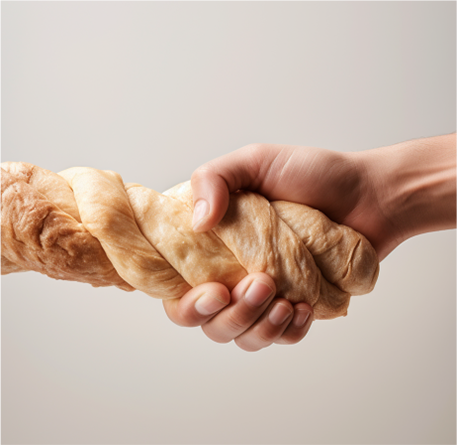Legal Compliance and Customer Trust: Weighing More Than Gold
Selling products that meet or exceed weight expectations is not just a legal obligation but a cornerstone of customer trust. Weight discrepancies can lead to hefty fines and, more importantly, erode consumer confidence. Precision in weight ensures that bakeries not only adhere to regulations but also reinforce their reputation for fairness and quality, turning first-time buyers into loyal patrons.
The Packaging Perks: Reducing Waste and Rejections
In the realm of bakery economics, the cost savings extend beyond the mixing bowl. Accurate weight control streamlines the packaging process, reducing the likelihood of product damage due to size discrepancies and lowering the rejection rates of final products. These efficiencies translate into direct savings, reducing the need for costly rework and maximizing the yield from each batch of ingredients.
Enhancing Plant Efficiency: The Ripple Effect
Accuracy in weight measurements boosts overall plant efficiency. By minimizing the need for weight-related corrections at various stages of production, bakeries can achieve smoother operations, better use of manpower, and higher equipment utilization. This operational excellence not only reduces costs but also improves employee morale and job satisfaction, creating a positive feedback loop that further enhances productivity and profitability.
Investing in Technology: Calculating the ROI
In the quest for weight accuracy, technology emerges as a powerful ally. From precision scales to automated mixing and portioning systems, technological investments can dramatically reduce the margin of error. While the upfront costs may seem daunting, a detailed ROI analysis often reveals that these investments pay for themselves within a few years, through savings on ingredients, reduced waste, and increased production capacity.
Conclusion: The Bottom Line on Weight Accuracy
Weight accuracy in baking is more than just a practice; it’s a philosophy that champions meticulous attention to detail, operational excellence, and a relentless pursuit of efficiency. By honing in on this crucial aspect, bakeries can unlock significant cost savings, bolster their reputation for quality, and set the stage for sustainable growth and profitability.
Embracing weight accuracy is akin to finding the perfect recipe for success—one that balances the art of baking with the science of economics to create a delightful outcome that benefits everyone from the baker to the end consumer. So, here’s to the precise measurements that don’t just perfect flavours but also elevate bakery businesses to new heights of profitability!
Q: How can small bakeries afford the technology for better weight accuracy? A: Look into leasing options or grants for small businesses. Investing in modular technology can also allow for gradual upgrades as the business grows.
Q: Can weight accuracy really make a difference in a small-scale operation? A: Absolutely! Even small bakeries benefit from reduced waste and ingredient costs, which can significantly impact their bottom line.
Q: What’s the first step towards improving weight accuracy in a bakery? A: Start by auditing your current processes to identify where the most significant discrepancies occur. Investing in a high-quality digital scale and training staff on its importance are great initial steps.

